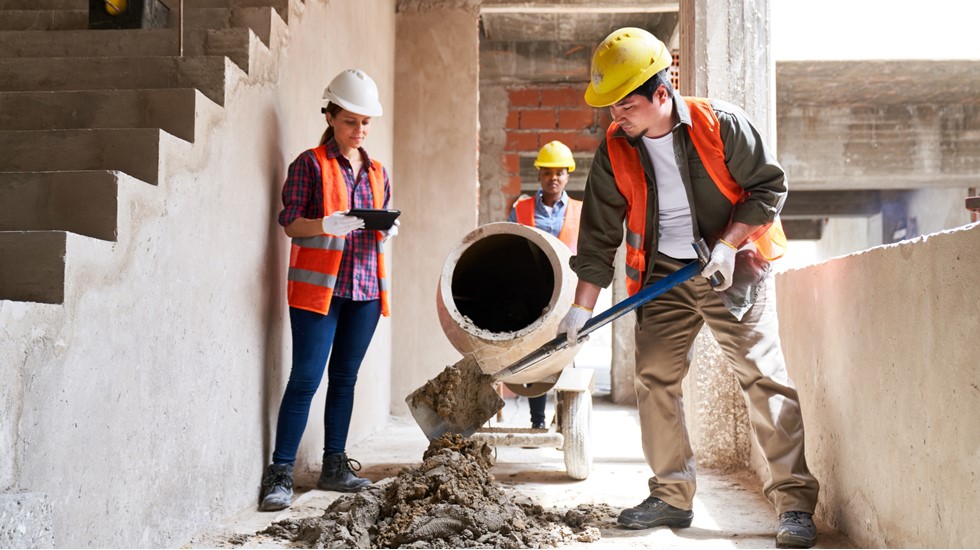Construction spending slumped 0.3% in May; down 3.5% compared to a year ago
Policy uncertainty weighs over the construction sector as rising costs of inputs and labor are complicating projects.

July 7, 2025
Construction spending slumped 0.3% in May and was down 3.5% compared to a year ago. The May data release revised all construction spending back to 2018; spending from 2023 to September 2024 was higher than previously thought but spending over the last seven months was lower. Fluctuations in price levels are not captured in the report. Input costs to construction are up 1.9% from a year ago, not including labor costs.
Trade policy remains in flux, with the expiring pause in many countries’ tariff rates potentially extended into August. The construction industry is less exposed to trade than others, with only about 7% of all inputs not produced domestically; that figure rises to 10% for the residential construction sector, which is much more heavily reliant on wood products. Unfortunately, even a smaller share of imports does not protect the industry from disruptions to projects. According to the May Institute of Supply Management services survey, suppliers are already raising prices to pass on the costs of tariffs. Heating, ventilation and air conditioning equipment costs are rising, while electrical equipment and transformers remain in short supply.
Private residential construction spending fell 0.5% in the month on lower single-family construction. Multifamily construction was flat. The data were not revised by much since the end of 2024. Still high mortgage rates, souring consumer attitudes and increased financial insecurity are keeping many buyers sidelined for longer. The traditionally busy spring home buying season is off to a lackluster start, with many builders feeling pessimistic about the low levels of foot traffic and sluggish current sales activity. Larger builders are better able to absorb rising input costs and offer incentives like mortgage rate buydowns to help get buyers off the sidelines. Smaller builders are seeing increased levels of unsold inventory.
Private nonresidential construction spending was down 0.4% in May. Abandoned projects are an increasing concern. The data saw significant downward revisions since April 2024 due to land transportation infrastructure revised by about 15.5% lower. This includes construction and maintenance of bus and railroad terminals, mass transit infrastructure and railroads. A trucking recession, which began in 2022, is being exacerbated by trade disruptions and soaring costs of inputs and labor.
Construction of manufacturing plants for computer, electronic and electrical equipment continued to trend lower since its peak in mid-2024. This includes chip and battery plants, which saw a boom in investment from federal incentives passed in 2022. Q1 of 2025 saw about $6 billion in cancelation of battery manufacturing projects, a record. A slowdown in electric vehicles (EVs) demand is expected by the end of 2025, when the consumer tax credit for EVs is set to expire. Data since the start of the year for manufacturing and commercial infrastructure were revised about 2% lower.
Data center construction spending continues to reach new records while power infrastructure spending was slightly lower in the month. Revisions for these two categories were on average 2.5% and 5.5% higher, respectively, since 2024.
Public construction spending was up 0.1% in the month on higher spending at the federal level. The bulk of spending occurs by state and local governments, which was flat in the month and revised slightly lower since the start of the year.
Real private fixed investment will be a drag on growth for the next three quarters.

Yelena Maleyev
KPMG Senior Economist
Bottom Line
Policy uncertainty weighs over the construction sector as rising costs of inputs and labor are complicating projects. Steel and aluminum tariffs were doubled to 50% in early June, and investigations into lumber and copper will potentially lead to higher tariffs by fall. Real private fixed investment will be a drag on growth for the next three quarters.
Explore more

KPMG Economics
A source for unbiased economic intelligence to help improve strategic decision-making.
Subscribe to insights from KPMG Economics
KPMG Economics distributes a wide selection of insight and analysis to help businesses make informed decisions.
Meet our team
